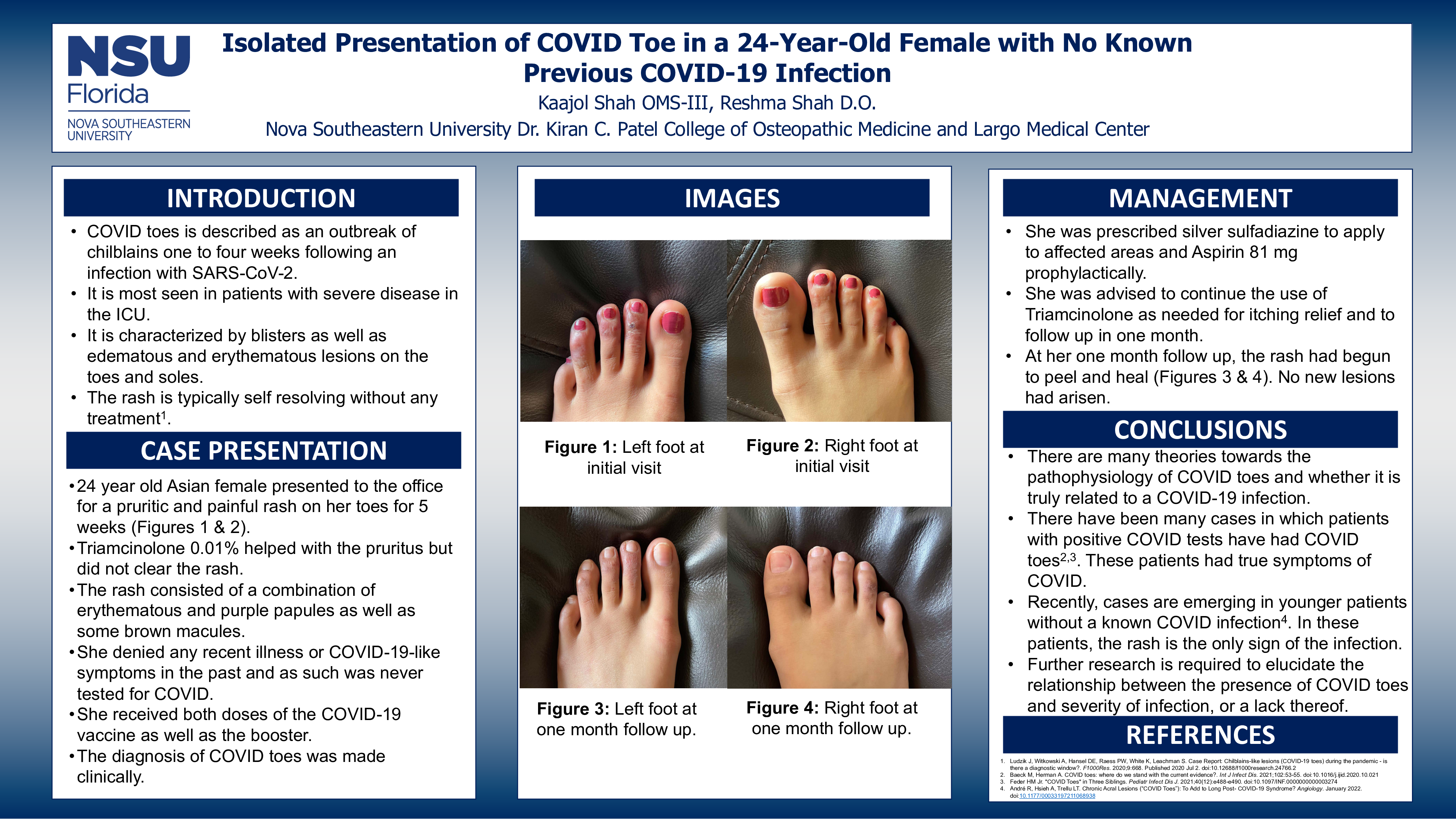Abstract
Introduction: COVID toe is described as the outbreak of chilblains one to four weeks following infection with SARS-CoV-2. While it was initially seen in patients with severe disease, the rash is starting to be seen more frequently in younger patients with very mild disease or no known disease at all. In those cases, the rash is considered the first and only presentation of a COVID-19 infection. We present a patient in which that is the case.
Case Description: A 24-year-old Asian female presented to the office with a rash on her toes for five weeks. She first noticed this rash on the second toe of her left foot. Over the next fewweeks, the rash began to progress to involve the third and fourthtoes of her left foot as well as the second to fourth toes of her right foot. She also noticed her toes change color from red to purple as the rash progressed. She described the rash as itchy and painful. The pain was a sharp, pinpoint pain and was worse when walking. She had tried over-the-counter cortisone cream as well as Triamcinolone 0.025% ointment. While there was some relief to the pruritus, the rash did not recede. Exposure to heat and hot showers exacerbated her itching. She had no knowledge of a previous COVID-19 infection and never had any symptoms suspicious of the infection such as fever, cough, or gastrointestinal issues. As such, she was never tested for COVID-19. She received both doses of the COVID-19 vaccine as well as the booster.
Her past medical history was unremarkable, and her family history did not include any hematologic or autoimmune disorders. Upon examination, the dorsal, ventral, lateral, and medial surfaces of the affected toes were covered in combination of erythematous and purple papules as well as some brown macules. The rash was confined to the toes and did not extend on to the foot. Swelling and inflammation were noted, especially around the nails.
The diagnosis of COVID toes was made clinically. The patient was advised to continue the use of Triamcinolone as needed for symptom relief. She was also advised to begin the use of prophylactic silver sulfadiazine and Aspirin 81 mg daily. She will follow up in one month. If there is no improvement in her condition, oral steroids may be considered.
Discussion: Cutaneous symptoms of COVID-19 are currently not well understood. The presence of a pseudo-chilblain rash has been reported in many patients with moderate to severe disease. In one case, a 48-year-old female experienced these lesions four weeks after the onset of upper respiratory infection symptoms. In another case, a 19-year-old female presented with the rash two months after the onset of her COVID-19 symptoms. These patients experienced obvious symptoms of the disease in the weeks prior to the onset of the rash including, fever, cough, gastrointestinal issues, fatigue, and arthralgias. In our case, the patient had no known history of a COVID-19 infection but still presented with COVID toe. For her, this was the only sign of the infection. While similar cases are emerging, such as the case of a 10-year-old male with COVID toes and no preceding illness, the pathogenesis of this manifestation remains uncertain. Further investigation is necessary to elucidate the relationship between COVID toes and the severity of prior infection, or lack thereof.





